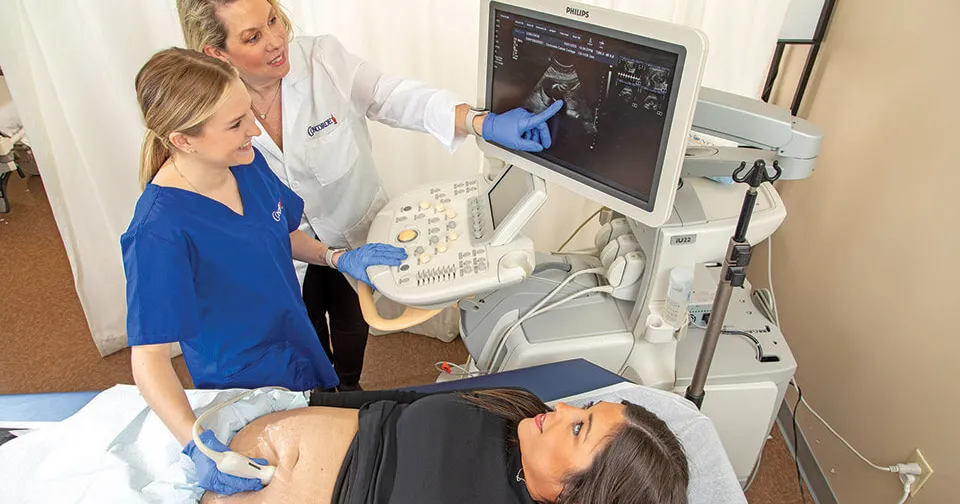
Diagnostic sonography
Diagnostic sonography in Nagpur, also known as diagnostic medical sonography, is an external medical imaging modality which uses ultrasound technology for generating pictures of structures within the inner human body. Diagnostic sonography in Nagpur has numerous applications for diagnosing and keeping track of particular medical conditions:
1. Diseases of the abdomen including, among others, gallstones and disease of the liver.
2. Other pelvic disorders, including uterine fibroids and ovarian cysts
3. Heart diseases: such as heart valves, and blood clots
Musculoskeletal disorders, including tendonitis, and ligament sprains.
5. Cancer: for instance, liver cancer, kidney cancer, and pancreatic cancer
Diagnostic sonography, in other words, diagnostic medical sonography is the modality which is known as non-invasive medical imaging; it uses ultrasound technology to produce images of internal body structures. Some main points about diagnostic sonography are:
What is Diagnostic Sonography?
Diagnostic sonography is a modality which produces images of internal structures and is also known as diagnostic medical sonography. It is a non-invasive medical imaging modality that uses ultrasound technology.
How Does it Work?
Transducer sends sound waves and receives them as well.
Reflections from internal structures, coming back to a transducer
Converting sound waves to images on the screen
;
Applications of Diagnostic Sonography
Abdominal disorders-gallstones liver disease
Pelvic disorders: uterine fibroids: ovarian cysts
Cardiovascular disease: heart valve problems; blood clots
Musculoskeletal disorders-tendonitis, ligament sprains
Cancer-liver kidney, pancreatic cancer
Fetal development during pregnancy
Gynecologic disorders: cervical stenosis: endometriosis
Advantages of Diagnostic Sonography
– Non-invasive and painless
– No radiation exposure
– Real-time imaging enables prompt diagnosis
– Less expensive compared to the other imaging modalities
Specialized Fields in Diagnostic Sonography
– Cardiac sonography
– Vascular sonography
– Abdominal sonography
– Obstetric and gynecologic sonography
– Musculoskeletal sonography
– Pediatric sonography
– Neurosonography
Diagnostic Sonographer
-Manages the equipment related to ultrasound
– Interprets images and gives preliminary results
– Coordinated with health care professionals in the diagnosis and management of patients
Does this help? Do you have any other questions?.
What Is a Diagnostic sonography?
Diagnostic sonography is indeed a branch of medical imaging; specifically, it refers to diagnostic medical sonography, which employs ultrasound technology in creating internal body structure images. It is noninvasive and painless, using high-frequency sound waves in order to visualize the organs, tissues, and blood vessels.
Diagnostic sonography is used to:
Evaluate for abnormalities in organs and tissues
Diagnose different medical conditions like gallstones, liver disease, and heart defects.
Follow the development of a fetus in a woman’s womb
Help direct invasive medical procedures such as taking a biopsy or giving some form of treatment to a tumor
Evaluate blood flow or look for clots in blood
Diagnostic sonographers utilize equipment particular to their specialty. The images are interpreted by a health care provider or a specialized physician referred to as a radiologist.
Diagnostic sonography is one of the most critical imaging capabilities in medicine, offering a safe, non-invasive visualization of inner structures and detection of any abnormality.
What procedures Diagnostic sonography?
Diagnostic Sonography procedures include:
1. Abdominal Sonography:
– Liver
– Gallbladder
– Pancreas
– Kidneys
– Spleen
2. Obstetric Sonography:
– Fetal growth
– Estimation of pregnancy age
– Location of placenta
– Amniotic fluid study
3. Cardiac Sonography (Echocardiogram):
– Function of heart valves
– Blood flow survey
– Assessment of failure of heart
4. Pelvic Sonography:
– Uterus
– Ovaries
– Cervix
– Bladder
5. Musculoskeletal Sonography:
– Tendons
– Ligaments
– Muscles
– Joints
6. Neurosonography:
– Brain
– Spinal cord
7. Vascular Sonography:
– Arteries
– Veins
– Blood flow survey
8. Breast Sonography:
– Tissue study of the breast
9. Thyroid Sonography:
– Assessment of thyroid gland
10. Scrotal Sonography:
– Examination of the testes
These tests use ultrasound technology to create images of inner structures which can be viewed, therefore allowing healthcare professionals to diagnose and follow various health conditions.
At our Neurosys Multispeciality Center, we perform several key procedures including Craniotomy, which is primarily for the excision of brain tumors; V-P Shunt Surgery for treating hydrocephalus; surgeries for epilepsy; and operations targeting brain stem glioma. Beyond these, we offer a range of other neurosurgical services. If you have any questions that are not answere, please contact us through our Contact Us or Book your Appointment.
